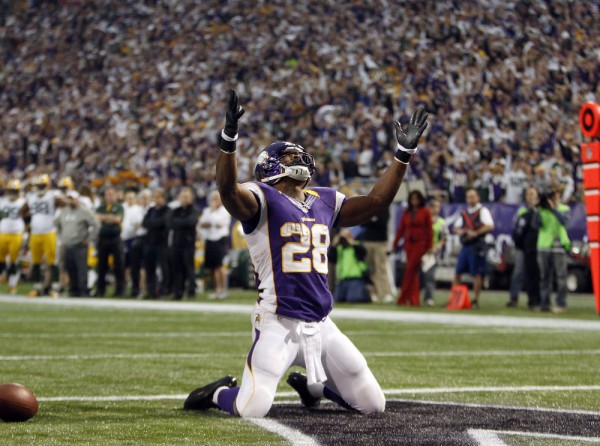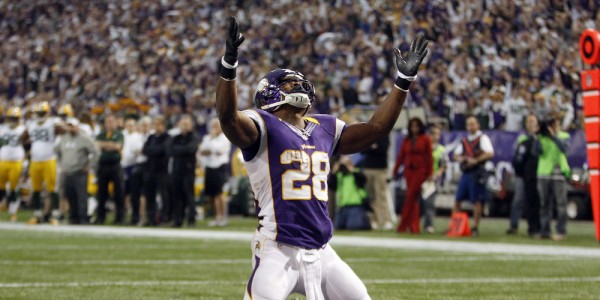
It seems Adrian Peterson is taking his attempts to tell the Minnesota Vikings he doesn’t want to play for them anymore to the next level. From words to action, or non-action, and not showing up to the OTAs.
The Vikings have three OTAs (organized team activities) scheduled, but Peterson remains at his home in Texas, waiting for the Vikings to give up on. Meanwhile, Minnesota don’t have any intention of doing so. He has three more years on his contract, and at least from what’s been happening, we can assume they’re hoping that he changes his mind and if not, there’s nothing he can do about it.
There is financial significance to Peterson not showing up. He has a $250,000 bonus if he makes 90% of the OTAs and minicamps. The Vikings also have OTAs June 2-4 and June 8-11 and a mandatory minicamp June 16-18. He’ scheduled to make $12.75 million in 2015 and over $44 million through 2017, but that money isn’t guaranteed.
The Vikings can fine Peterson $72,000 if he doesn’t show up to next month’s minicamp, but probably won’t go down that road. Peterson thinks he didn’t have support last year from the organization as he was dealing with the child-abuse allegations, which caused him to miss 15 games in 2014. He would love for someone to pick up the phone and trade for him, but right now no one is touching him.
The Vikings are acting and behaving as if this is still the best running back in the NFL (which was probably true two years ago). Not a 30-year old who has played just one game in what will be two years when next season begins. They’re asking for a price teams won’t be willing to pay, as if trying to make a point that everything is OK, and there’s no need to make too much of Peterson’s perceived hurt feelings.
In terms of legality and contract, Peterson is stuck. No teams wants to pay him the kind of money he’ll be getting from Minnesota. However, Peterson’s contract isn’t guaranteed, so if things do become more ugly than they are now and Peterson loses even more trade value, the Vikings can cut him with only $2.4 million in dead money as collateral damage.
